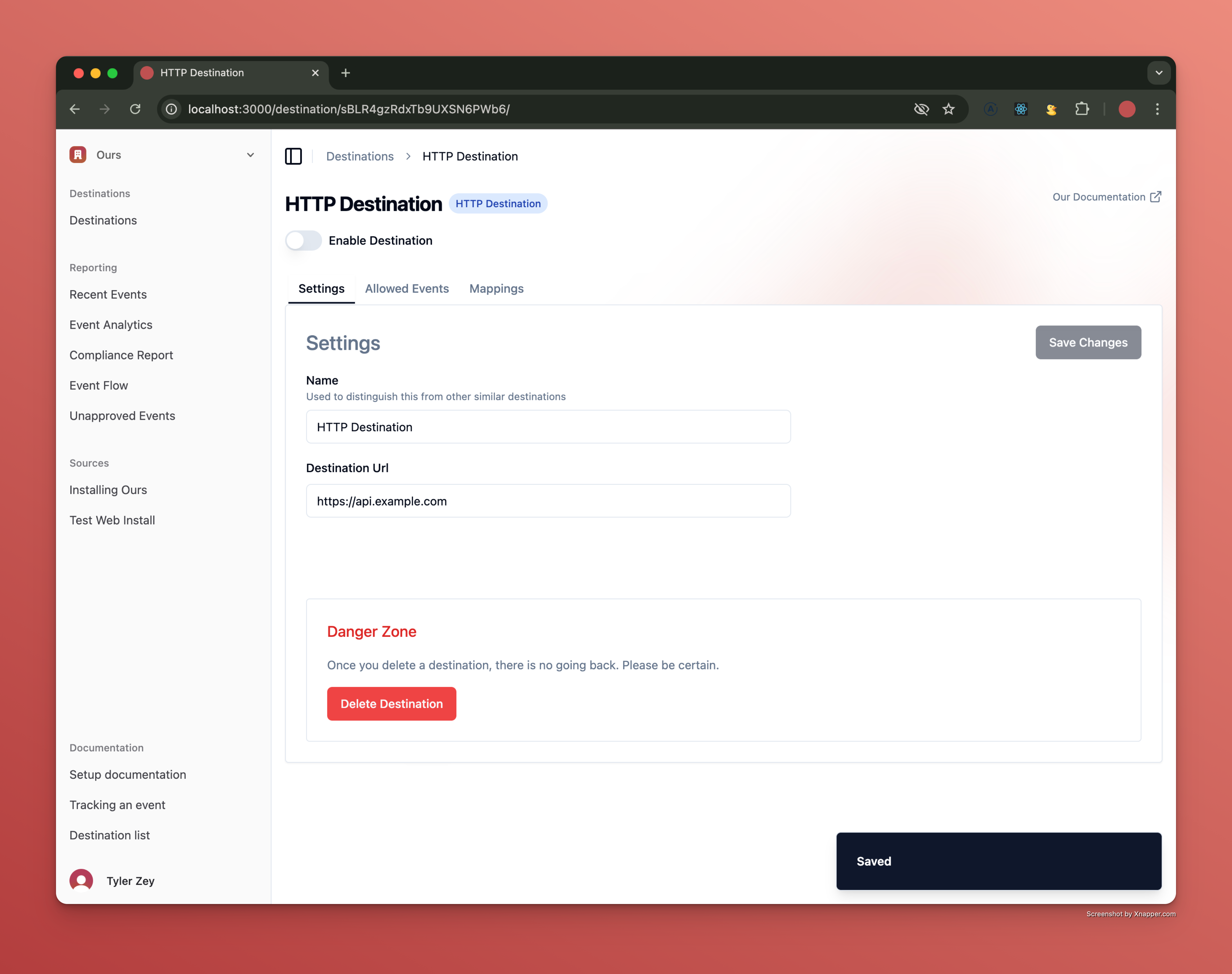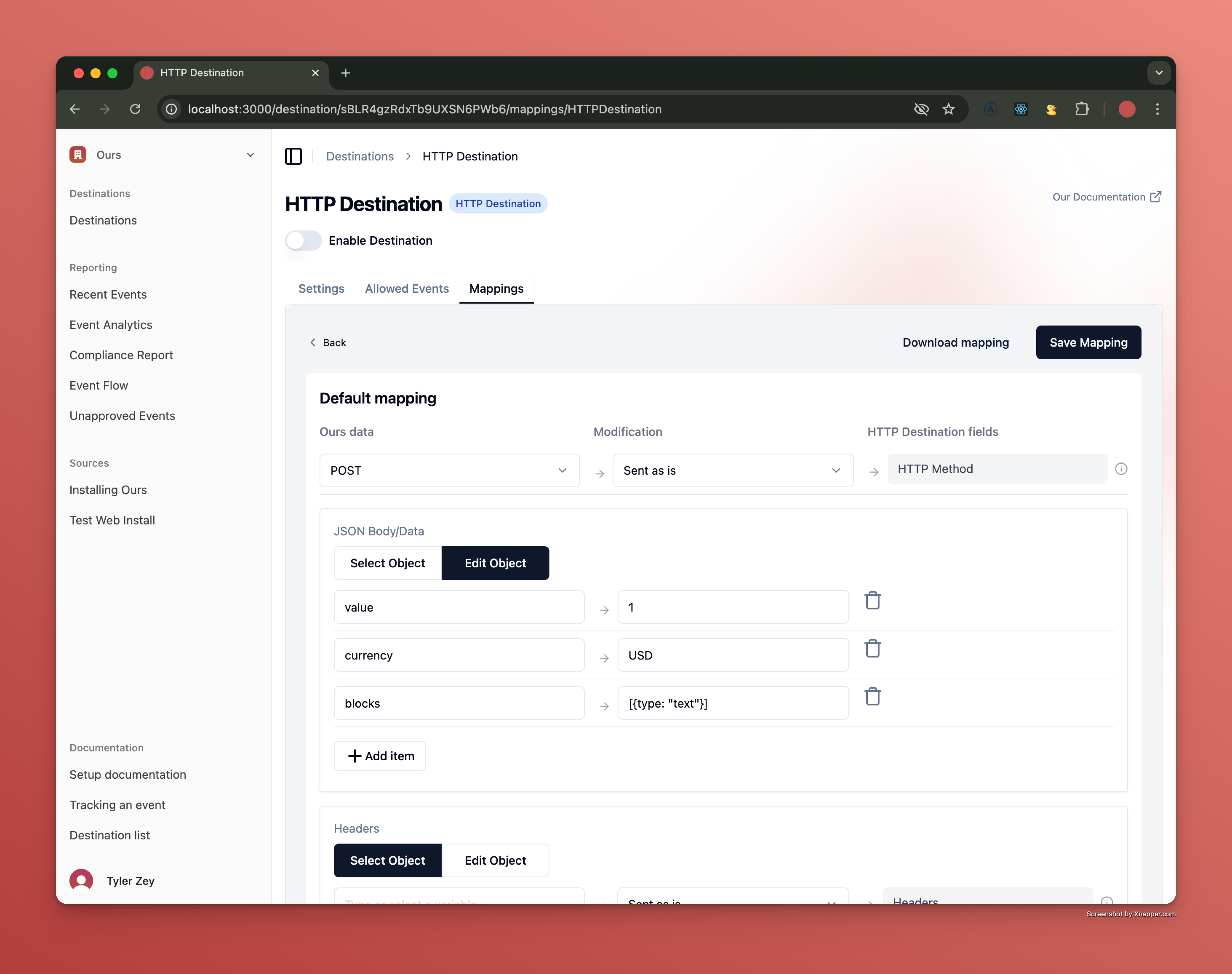HTTP API Destination
Learn how to use the HTTP API Destination to send data to custom endpoints, enabling advanced configurations for HIPAA-compliant integrations.
HTTP API Destination
The HTTP API Destination allows you to send data to any custom endpoint with complete control over the request format. This destination is ideal for integrations with platforms that are not directly supported by Ours. You can configure headers, HTTP methods, and request bodies while maintaining HIPAA compliance.
Features of the HTTP API Destination
- Custom URL: Specify the endpoint URL to which data should be sent.
- Customizable HTTP Method: Choose between
POSTandGETrequests. - Advanced Data Mapping: Map internal data to the desired structure for your endpoint, including custom transformations.
- Headers Configuration: Add custom headers for authentication or other requirements.
- HIPAA Compliance: Ensure all data sent is compliant with privacy regulations, including hashing or redacting sensitive information.
Configuring the HTTP API Destination
1. Add the Destination
- Log in to your Ours account and navigate to the Destinations section.
- Click Add Destination and select HTTP API Destination.
- Provide a Name for the destination to distinguish it from others.
- Enter the Destination URL (e.g.,
https://api.example.com/data).
2. Define the Mapping
After creating the destination, configure the data mapping to control how your data is structured when sent to the endpoint.
Default Mapping
- Navigate to the Mappings tab of the HTTP API Destination.
- Click on Default Mapping to configure the default mapping for the destination.
- Use the interface to map internal data (e.g.,
value,currency) to the desired structure:- JSON Body/Data: Map each field to a value (e.g.,
currency→USD). - Headers: Add custom headers such as
AuthorizationorContent-Type. - Query Parameters: Map any query parameters required by the endpoint.
- JSON Body/Data: Map each field to a value (e.g.,

3. Configure the HTTP Method
You can choose between POST and GET for your requests:
- Use
POSTfor sending data in the body. - Use
GETfor sending data in query parameters.
Set the HTTP method in the Default Mapping section or override it for specific events in the custom mapping.
Example Use Case
Sending Data to a Custom CRM Endpoint
Imagine you want to send event data to your CRM that requires:
- A specific API key in the header.
- Data in the following format:
{
"value": 1,
"currency": "USD",
"blocks": [{ "type": "text" }]
}You would configure that like this:

Updated 4 months ago
